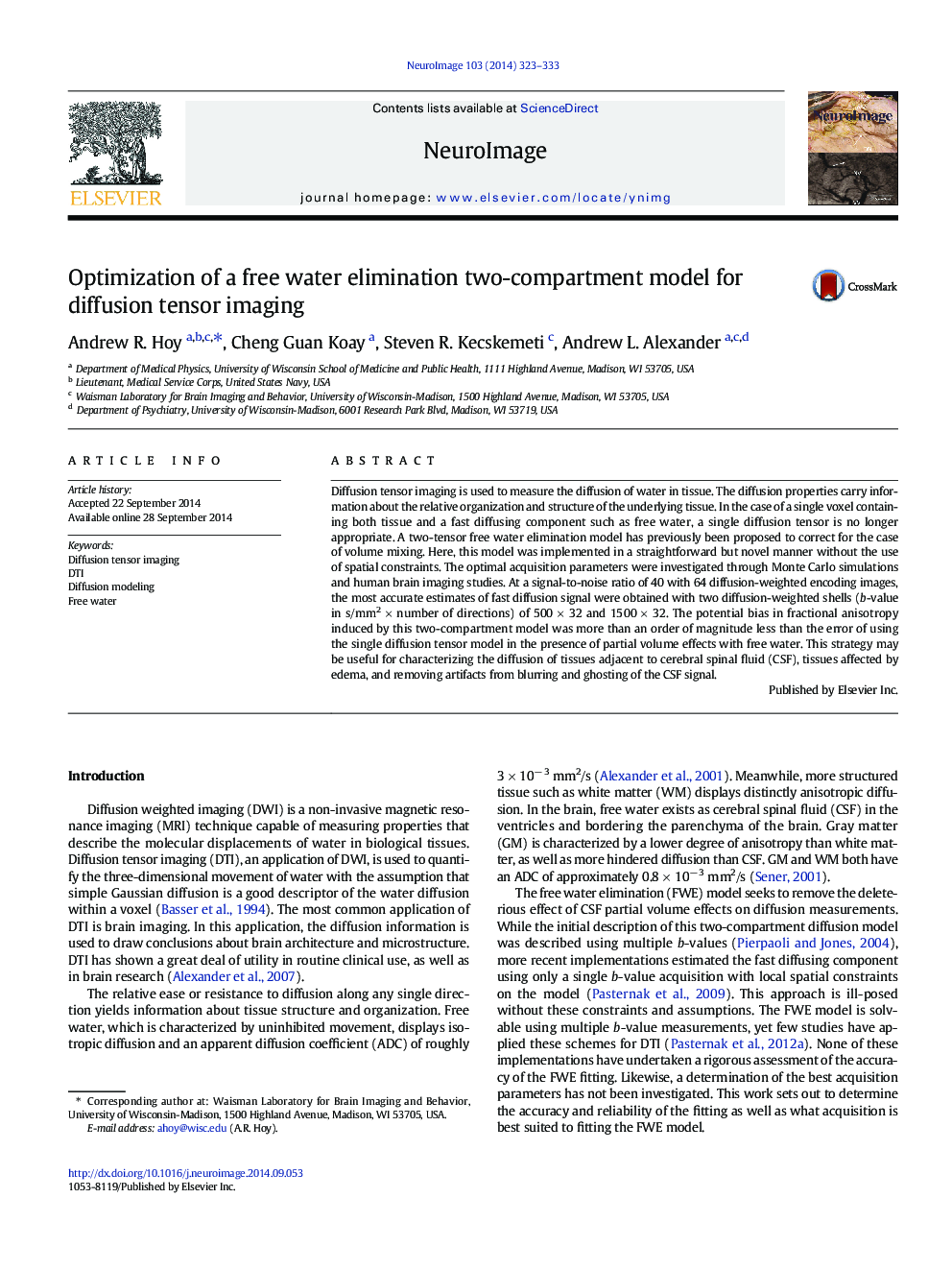| Article ID | Journal | Published Year | Pages | File Type |
|---|---|---|---|---|
| 6025763 | NeuroImage | 2014 | 11 Pages |
Abstract
Diffusion tensor imaging is used to measure the diffusion of water in tissue. The diffusion properties carry information about the relative organization and structure of the underlying tissue. In the case of a single voxel containing both tissue and a fast diffusing component such as free water, a single diffusion tensor is no longer appropriate. A two-tensor free water elimination model has previously been proposed to correct for the case of volume mixing. Here, this model was implemented in a straightforward but novel manner without the use of spatial constraints. The optimal acquisition parameters were investigated through Monte Carlo simulations and human brain imaging studies. At a signal-to-noise ratio of 40 with 64 diffusion-weighted encoding images, the most accurate estimates of fast diffusion signal were obtained with two diffusion-weighted shells (b-value in s/mm2Â ÃÂ number of directions) of 500Â ÃÂ 32 and 1500Â ÃÂ 32. The potential bias in fractional anisotropy induced by this two-compartment model was more than an order of magnitude less than the error of using the single diffusion tensor model in the presence of partial volume effects with free water. This strategy may be useful for characterizing the diffusion of tissues adjacent to cerebral spinal fluid (CSF), tissues affected by edema, and removing artifacts from blurring and ghosting of the CSF signal.
Related Topics
Life Sciences
Neuroscience
Cognitive Neuroscience
Authors
Andrew R. Hoy, Cheng Guan Koay, Steven R. Kecskemeti, Andrew L. Alexander,
